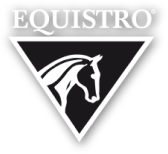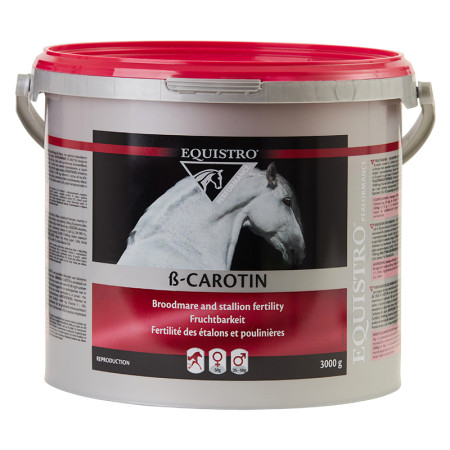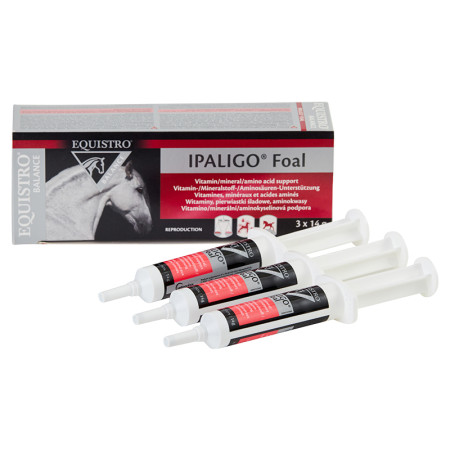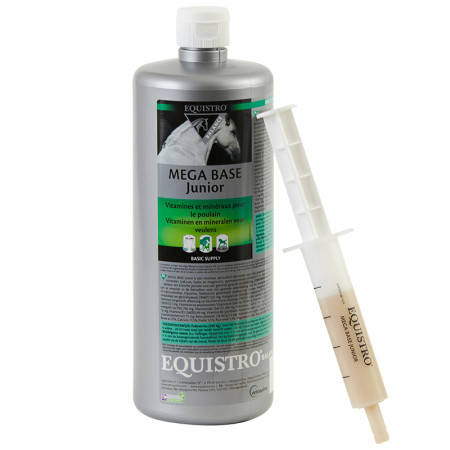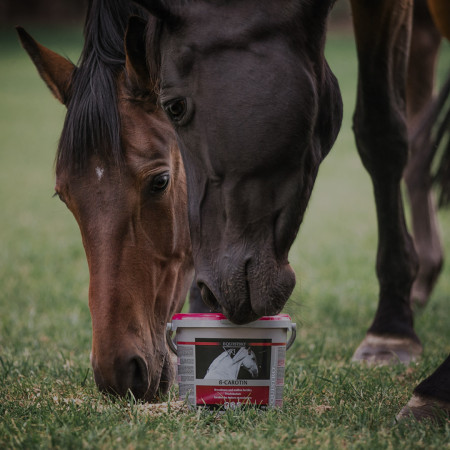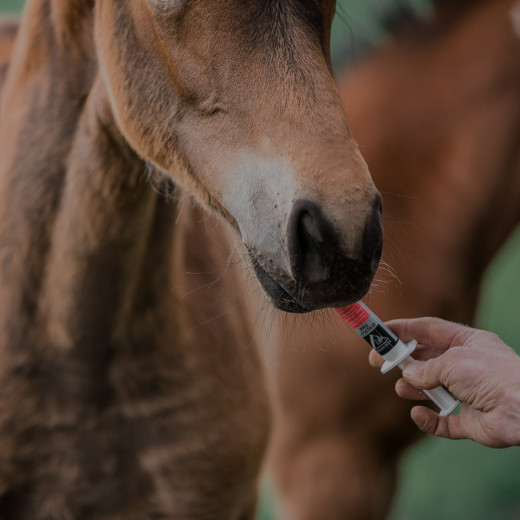
Breeding knowledge
Normally, horses are known as long day breeders. This means that their mating time is influenced by the increasing length of daylight. This seasonal characteristic originates in the evolution of the horse, as these animals only reproduce when the chances of survival are the greatest for their offspring, for example, factors such as ambient temperature, food supply and availability of water. The equine brain responds to increased exposure of the pupils to light by stepping up the secretion of melatonin. This results in release of the hormone GnRH from the hypothalamus. By stimulating the pituitary gland to produce the hormones FSH and LH, GnRH incites the reproductive glands to greater activity. The monthly cycle of the mare now commences. During this 22-day period an egg matures and is prepared for possible fertilisation in the 5-7 days that the mare is in season. If fertilisation of the egg takes place, a gestation period lasting up to 340 days then begins for the mare.
Vitamins: the name of the game
Every mare should be prepared for covering and foaling using carefully selected feed and added supplements covering her incresed needs, as any deficiency can lead to disorders of fertility and breeding losses. One key nutrient for broodmares and stallions is beta carotene, which can be used by the organism as a provitamin for producing vitamin A. 1 mg beta carotene is converted to 400 IU vitamin A. Beta carotene is directly associated with production of the hormone progesterone, which is not only important for the stallion in terms of covering performance and sperm quality, but also for the mare in almost all stages of reproduction. Beta carotene supports follicle maturation and plays a key role in conception and nidation of the embryo. In breeding horses, covering and foaling unfortunately often take place at a time when horses have not enough natural sources of beta carotene available (fresh green fodder). Hay or silage only have low levels of beta carotene, which moreover do not remain constant. For this reason it is essential to supplement the diet by adding a daily dose of 500 mg beta carotene to guarantee an adequate supply for each horse. Additionally, trace elements such as iron and copper are deposited in the foetus chiefly in the 10th and 11th months of gestation. Stored in the liver, they are needed for the formation of blood cells following birth, so are thus used up quickly. If there is a deficiency of these or other essential trace elements during and after pregnancy, this may affect the formation of the locomotor system, particularly in foals born prematurely. It is therefore advised to not only add iron and copper to the diet, but also zinc and vitamin A, at the latest during the last four weeks of gestation (with swelling of the udder).
The finest moment of all
The birthing process makes tremendous demands on both mare and foal. Birth takes place in 3 phases:
Contractions phase
The birth canal expands and the mare experiences powerful contractions that herald expulsion of the foal from the uterus. In this phase the mare is generally very restless, sweats, keeps on lying down and looking around at her belly.
Expulsion phase
After the mare’s waters have broken, the foal is propelled through the birth canal by pushing contractions and fully expelled. This phase usually lasts up to 40 minutes. Once the foal has emerged, the umbilical cord generally breaks as soon as the mare gets to her feet to lick the foal and so clear its airways.
After-birth phase
Delivery of the after-birth, the entire placenta, should take place within a maximum of two hours. It is essential to check that this process is complete as a mare may develop inflammation of the uterus if even only small parts are left behind. This can then lead to laminitis.
First steps into a new life
Once a foal has been born and all vital signs are satisfactory, it should receive the precious colostrum not later than 2 hours after birth. This is enriched with the mother’s (maternal) antibodies, which will protect the foal from life-threatening infections. The first days of life are a critical time for every foal. During this period the mother’s milk is often insufficient on its own to ensure an optimal supply of essential trace and bulk elements. Premature foals for example need a lot of extra iron as it is only during the final month of gestation that 50% of the iron reserves is stored in the foetus (2 mg iron per kg body weight / day). Also normal foals only obtain 10% of their iron requirements from their mother’s milk. In addition, a high level of beta carotene and vitamin A in the milk can protect the foal from increased susceptibility to rearing and infectious diseases. Already essential during gestation, it is also vital to supplement the diet of both mare and foal with these nutrients following birth. It should therefore be routine to add these supplements from the start, particularly in the case of foals born either prematurely or in winter.
THE BASIS FOR HEALTHY DEVELOPMENT OF THE FOAL IS THE RIGHT DIET, ABOVE ALL IN THE FIRST YEAR OF LIFE.
The wrong feed or an unbalanced diet for mare and foal during rearing can result in defective development, which may sometimes only become apparent once the foal is fully grown. Besides its mother’s precious milk, whose quality is significantly influenced by the feed she consumes during gestation and lactation, the foal also depends on getting high levels of key nutrients. Many foals are deficient in important minerals and trace elements particularly during the stabling period due to the lack of pasturage and sunlight. Newborn and milk foals thus additionally depend on a basic supply of trace elements and vitamins being readily available to ensure proper development of the skeleton and locomotor system and to strengthen their defences. In particular the trace elements iron, copper, zinc and selenium are crucial for the formation of blood, bone growth, muscle development and the immune system. In addition, the supply of the vitamins A and D3 during winter is essential to ensure the growth of all cells in the body and healthy mineralisation of the bones making up the skeleton.
Dr. med. vet. Caroline Fritz
